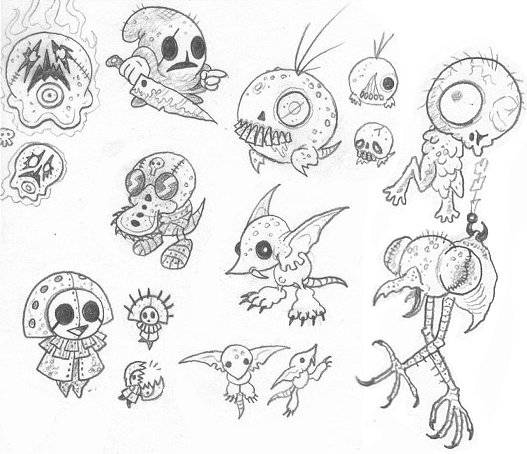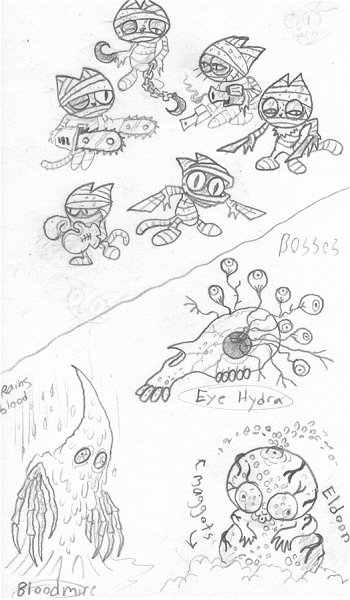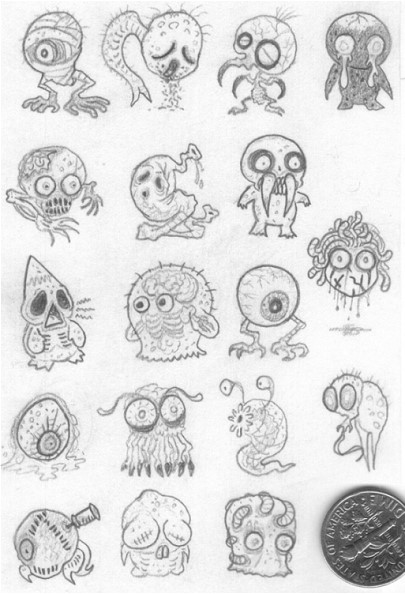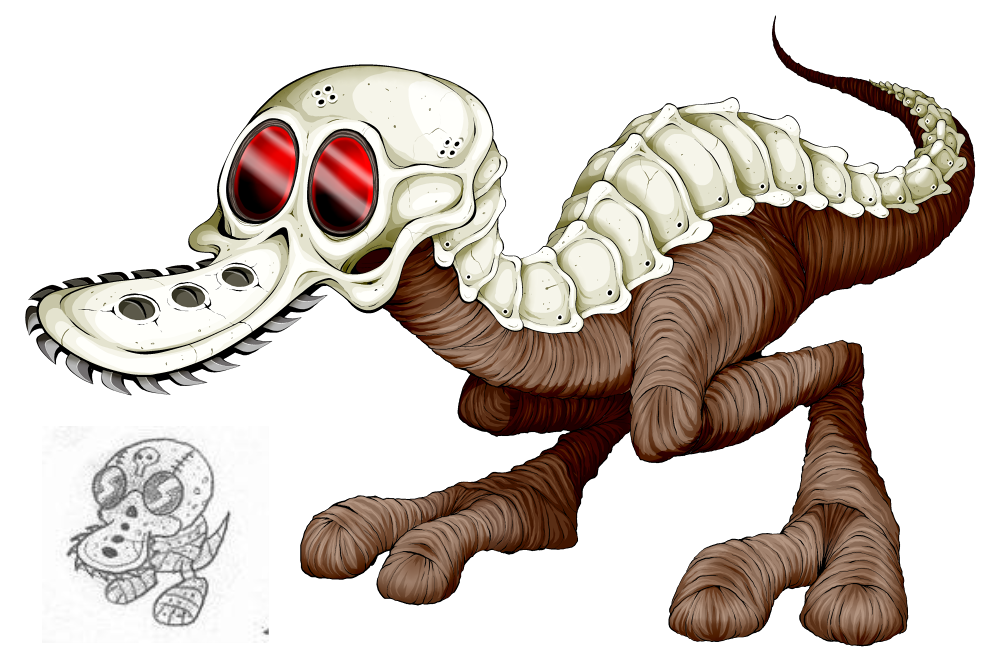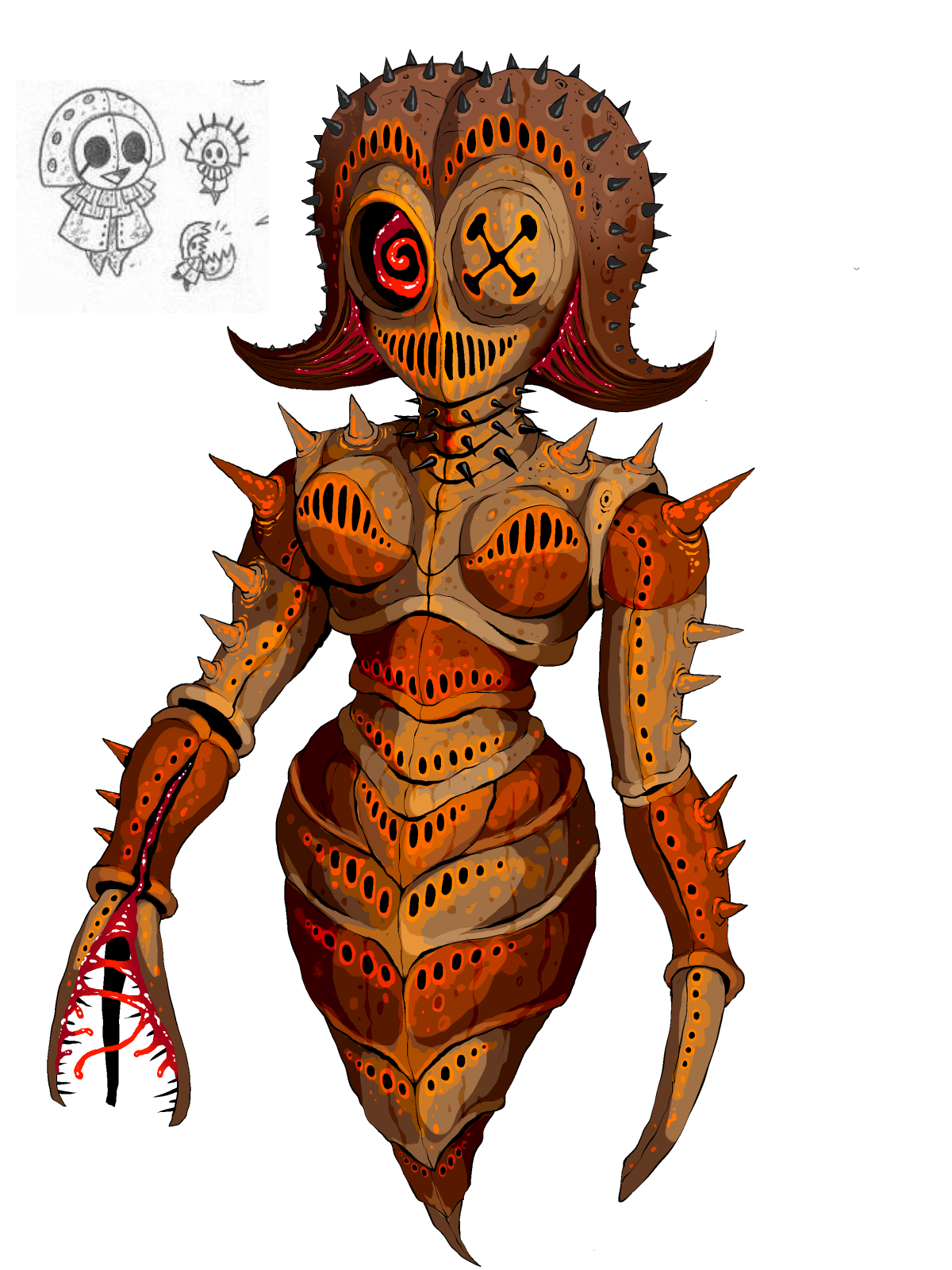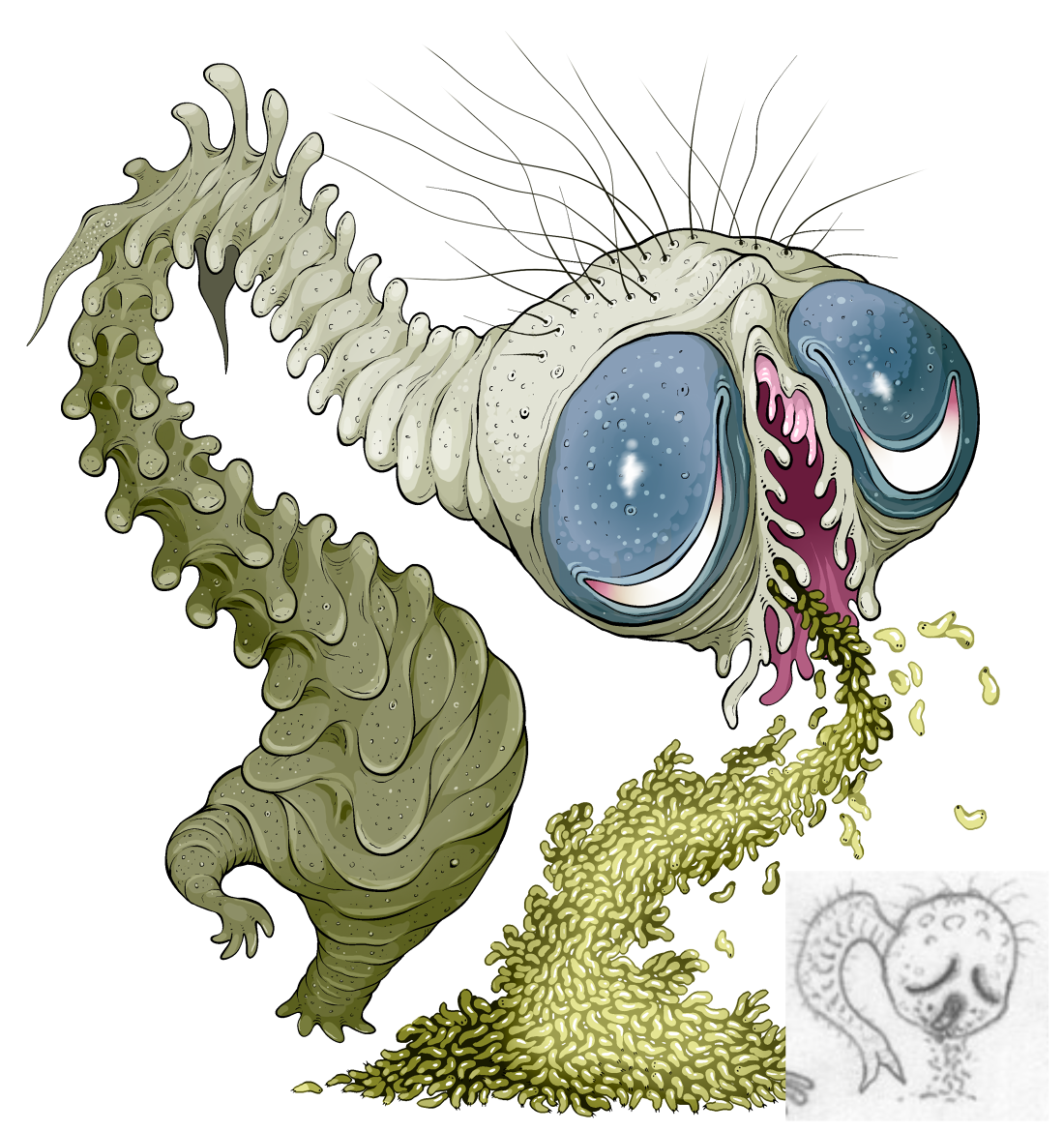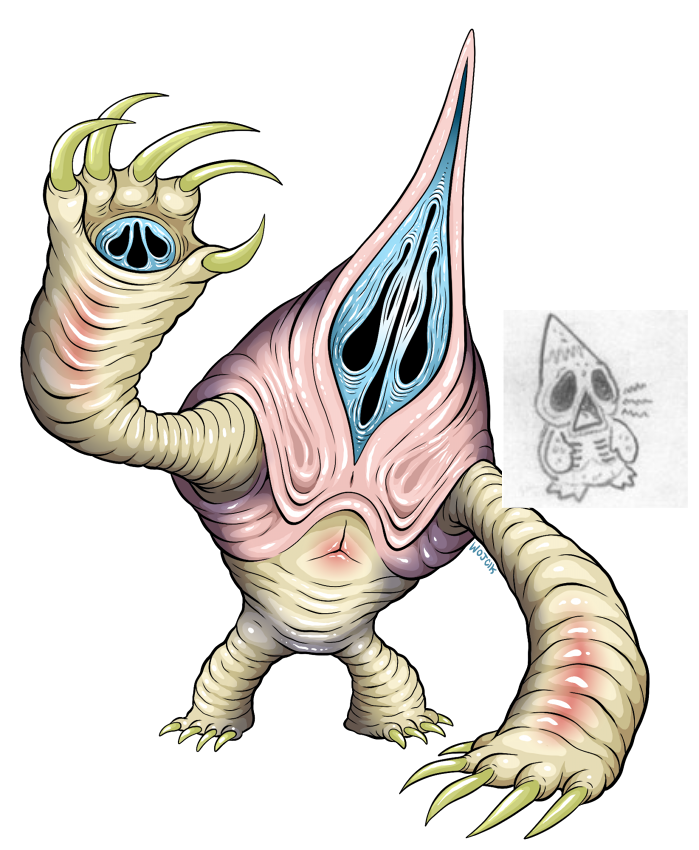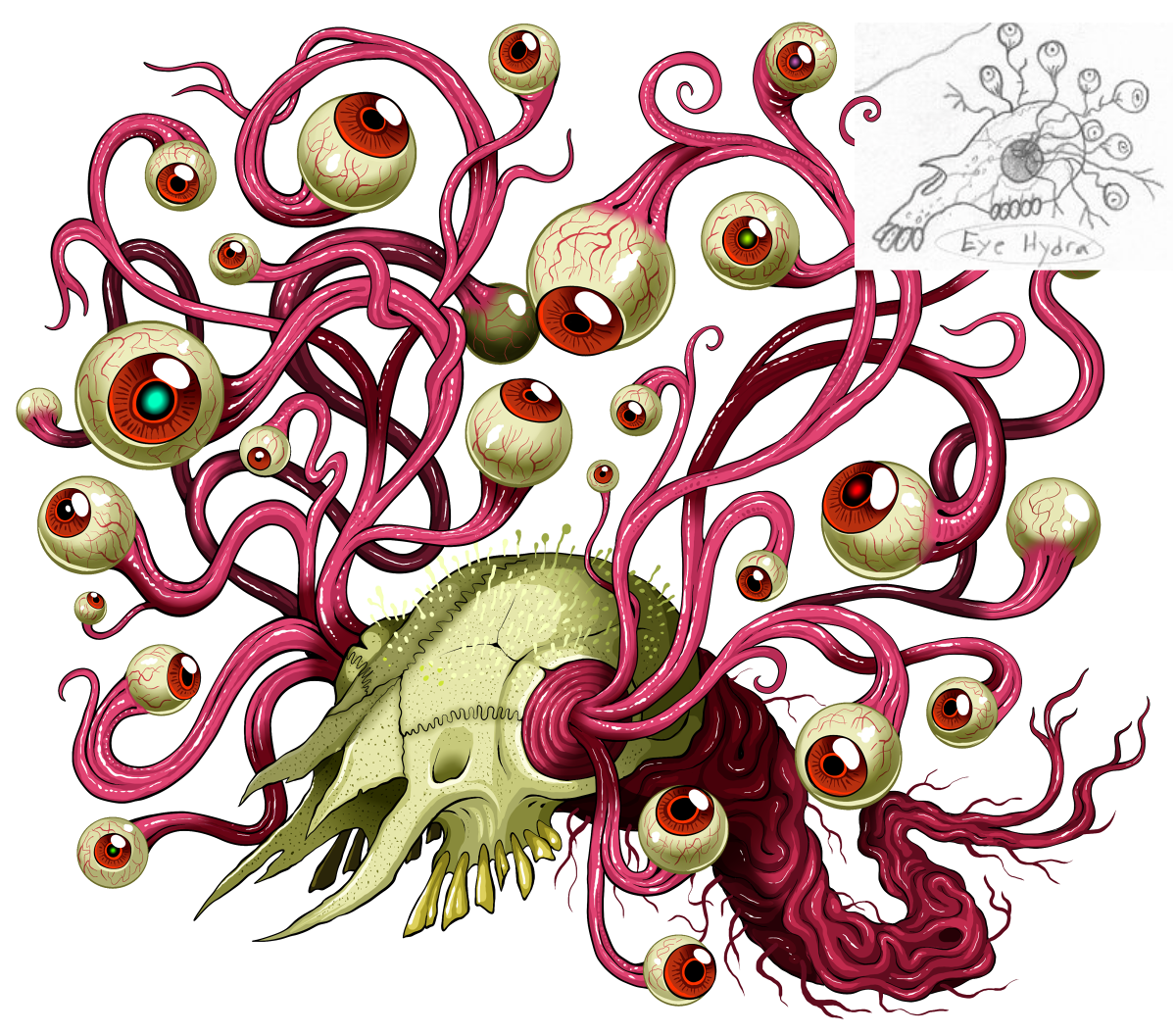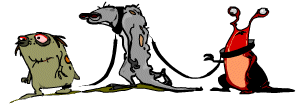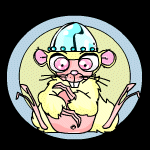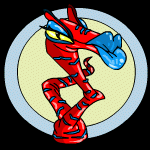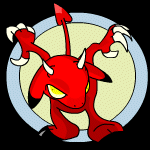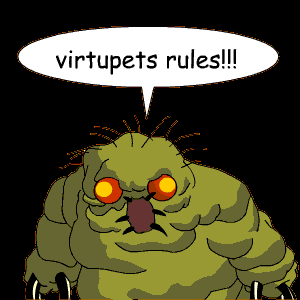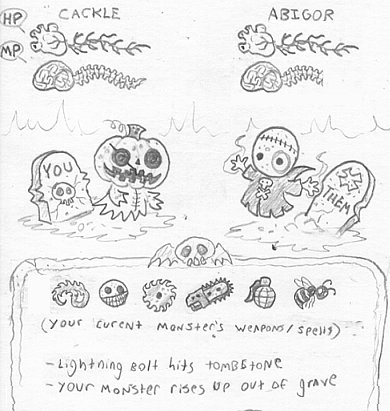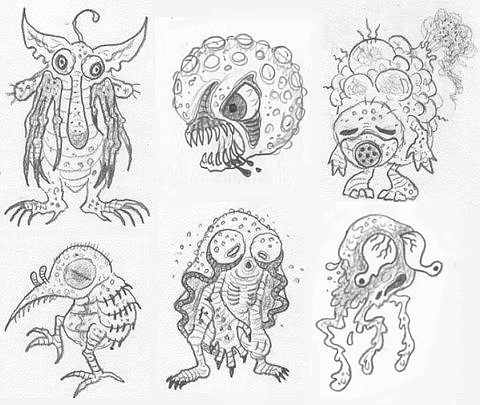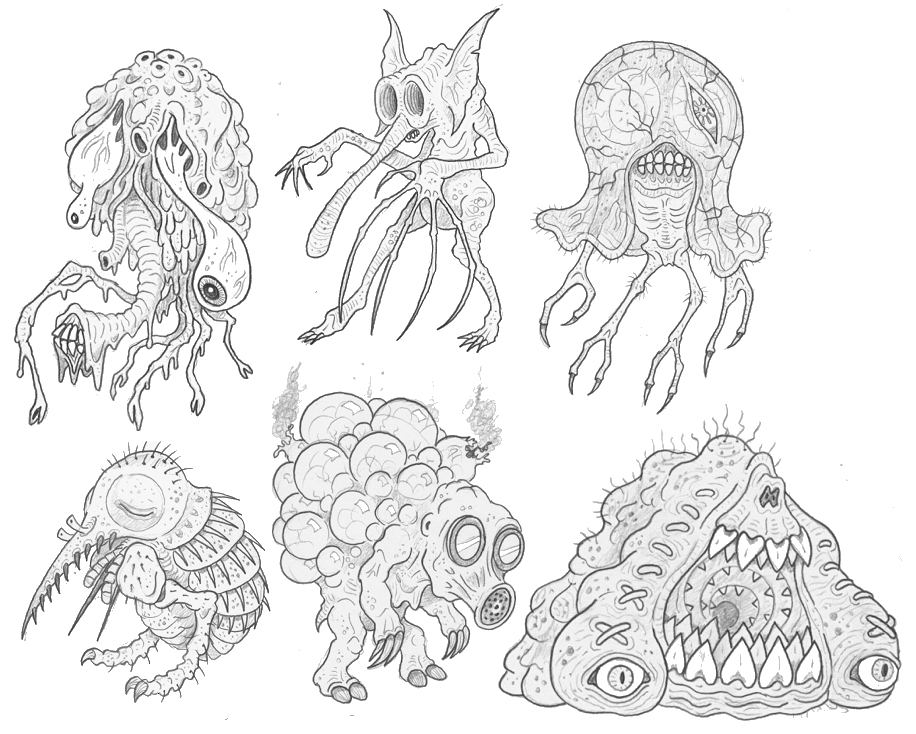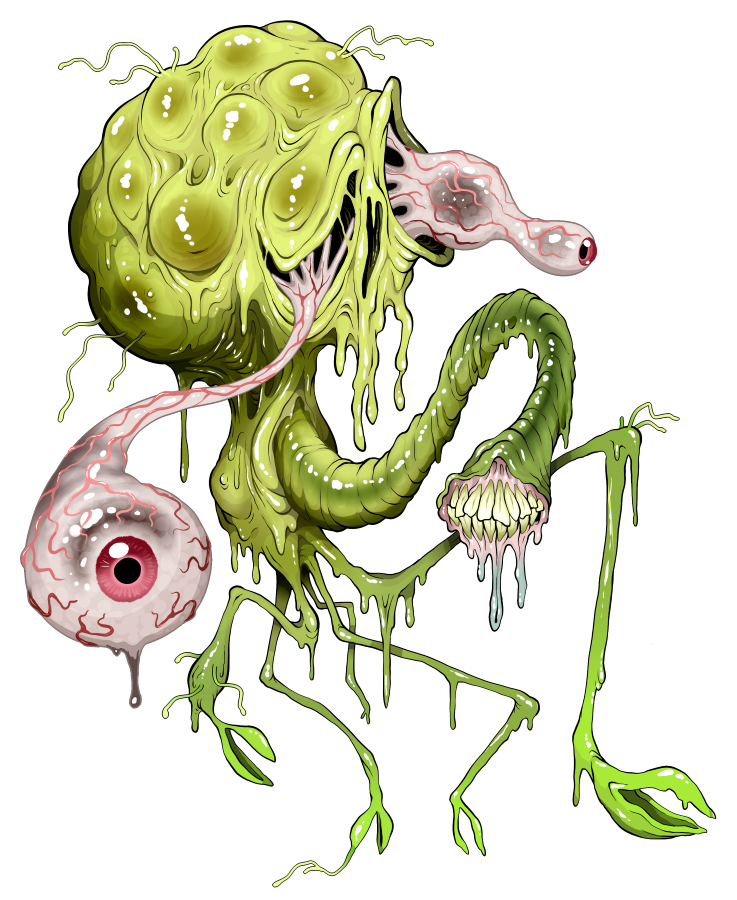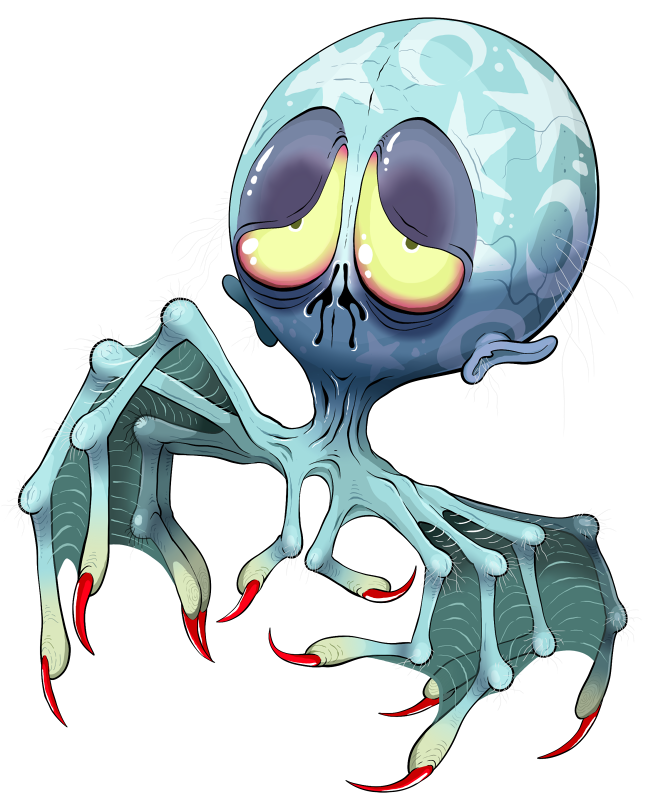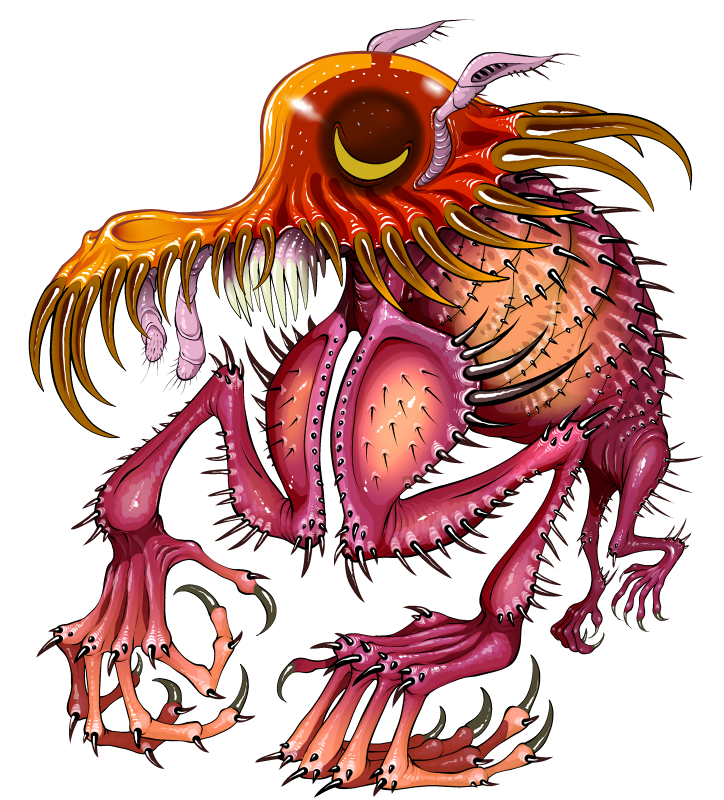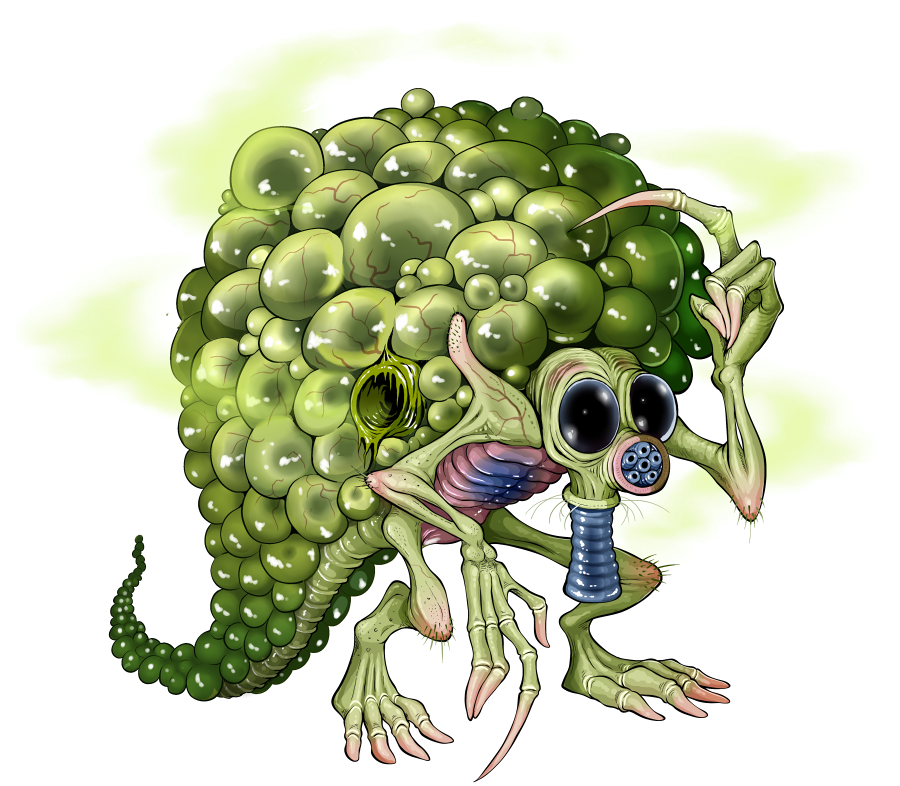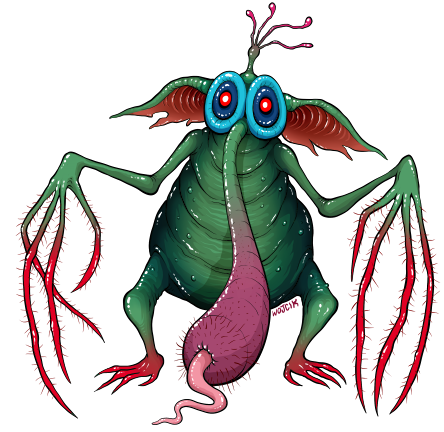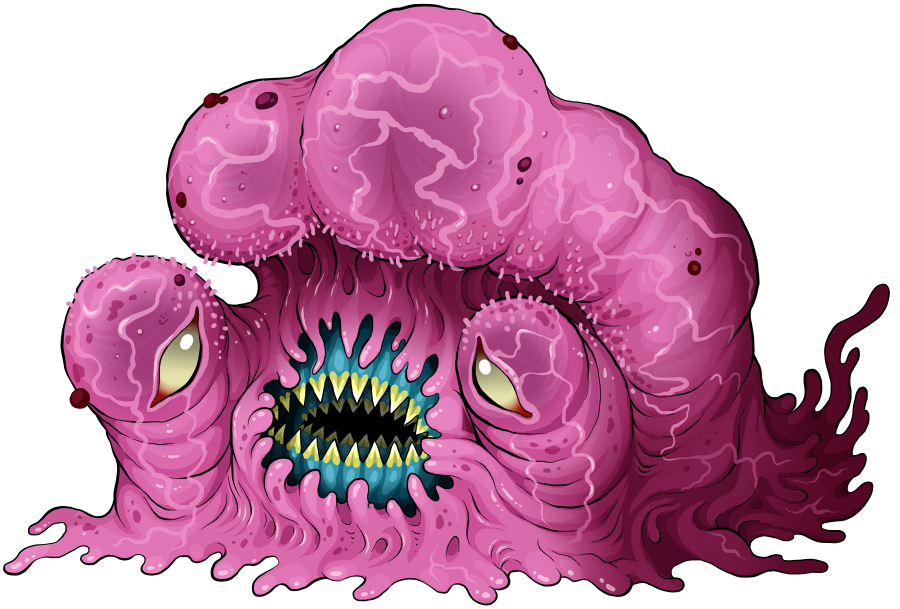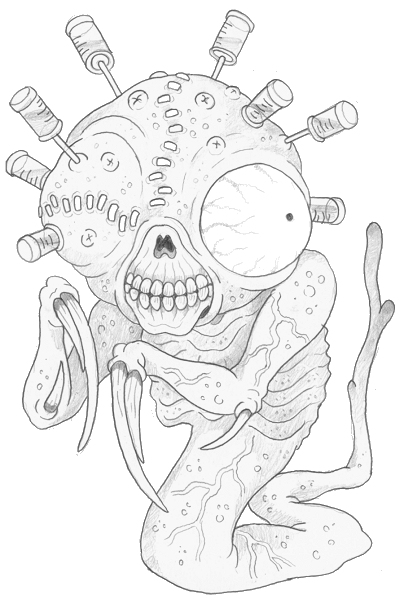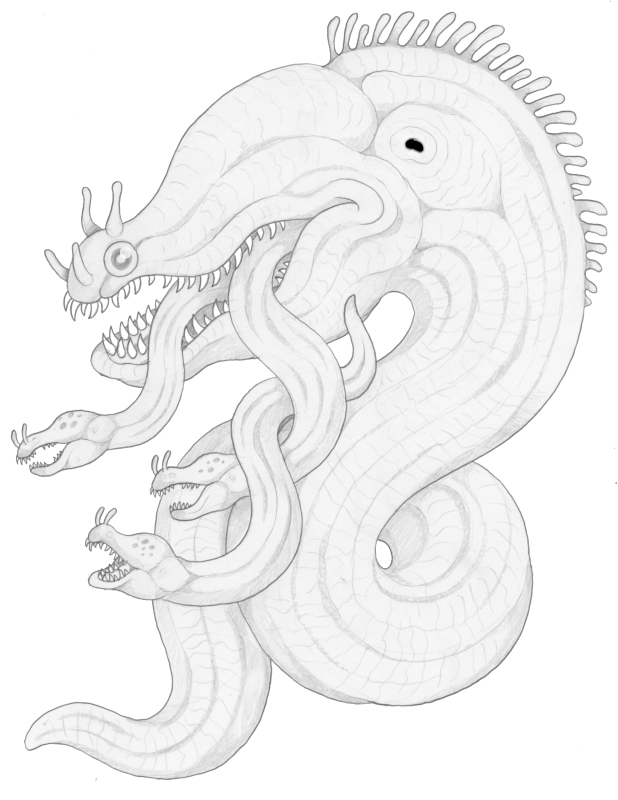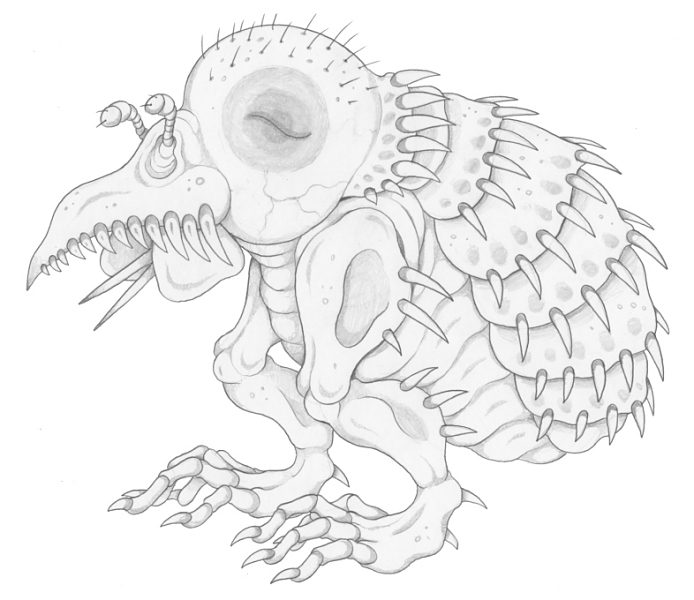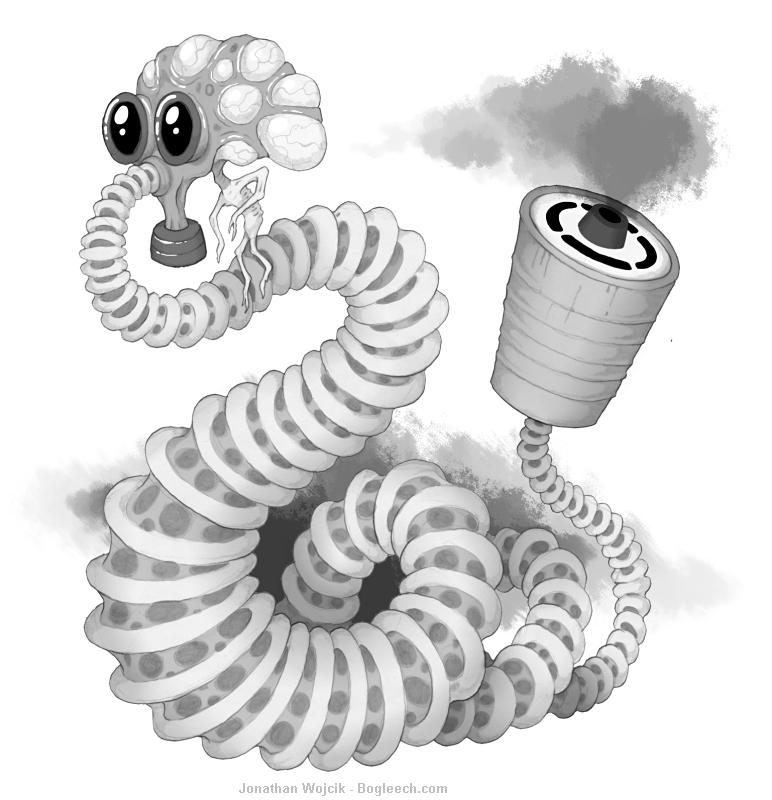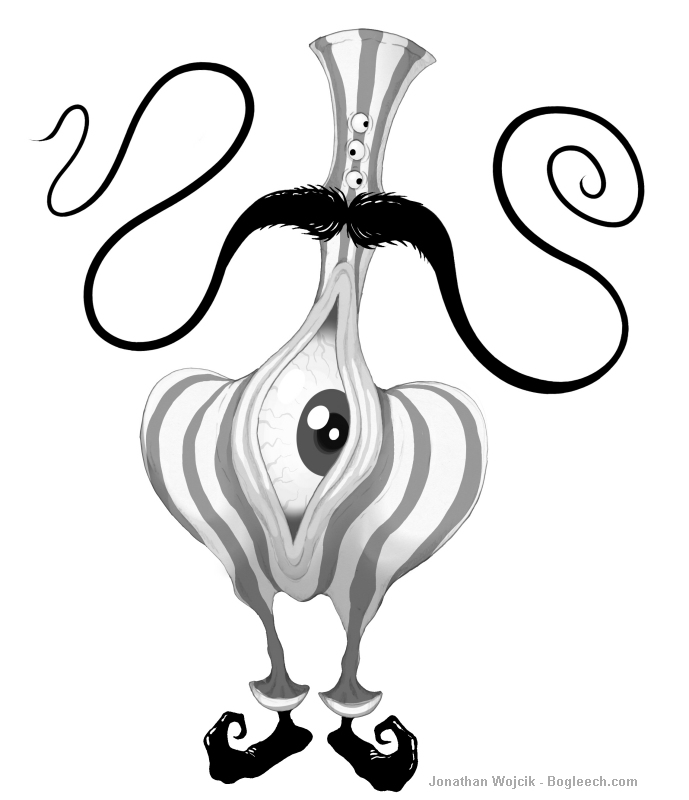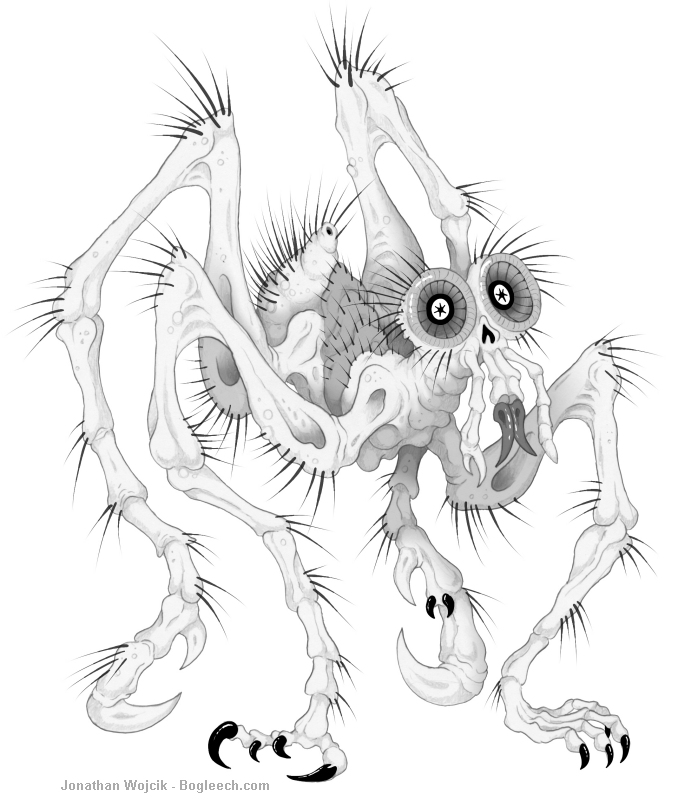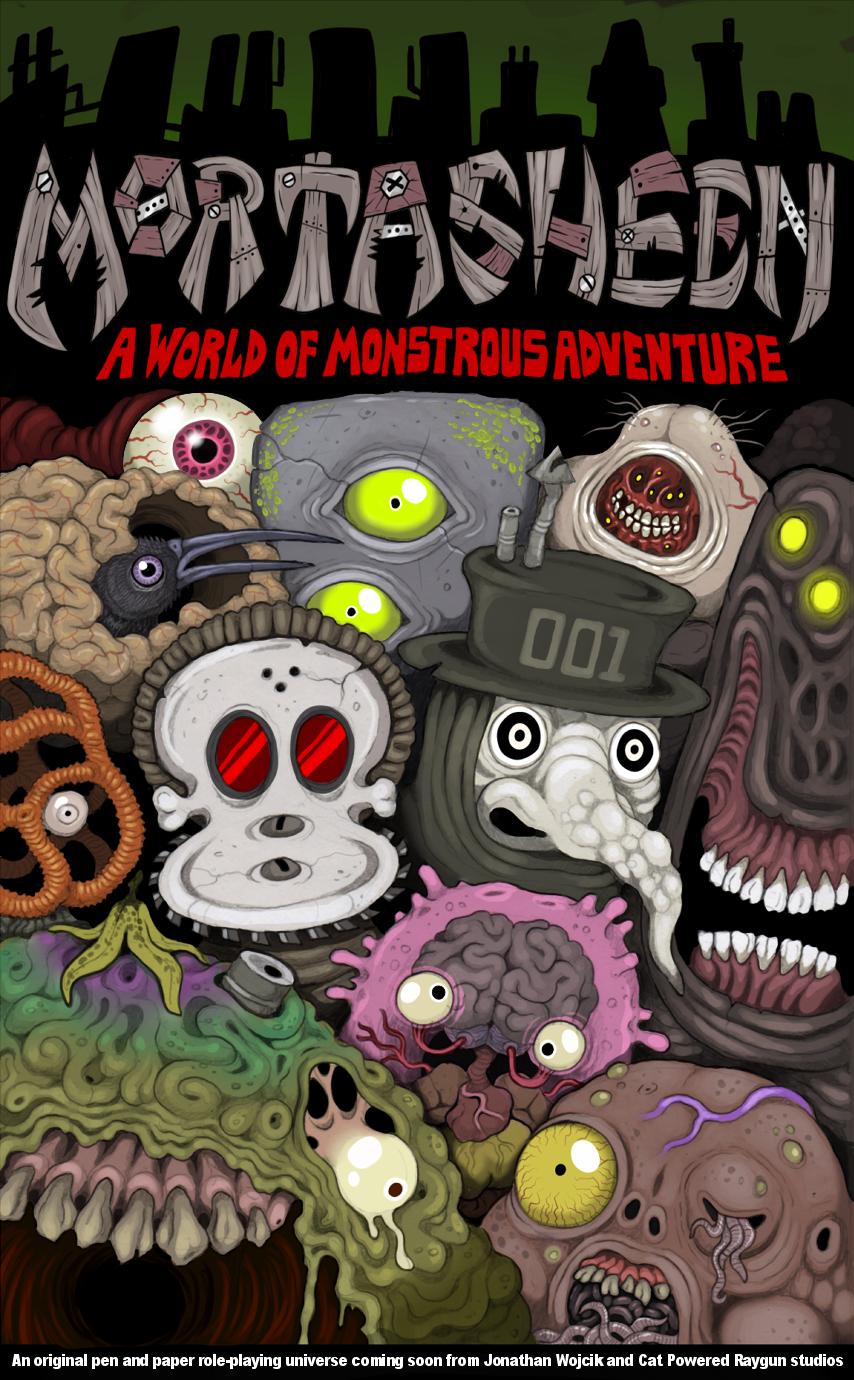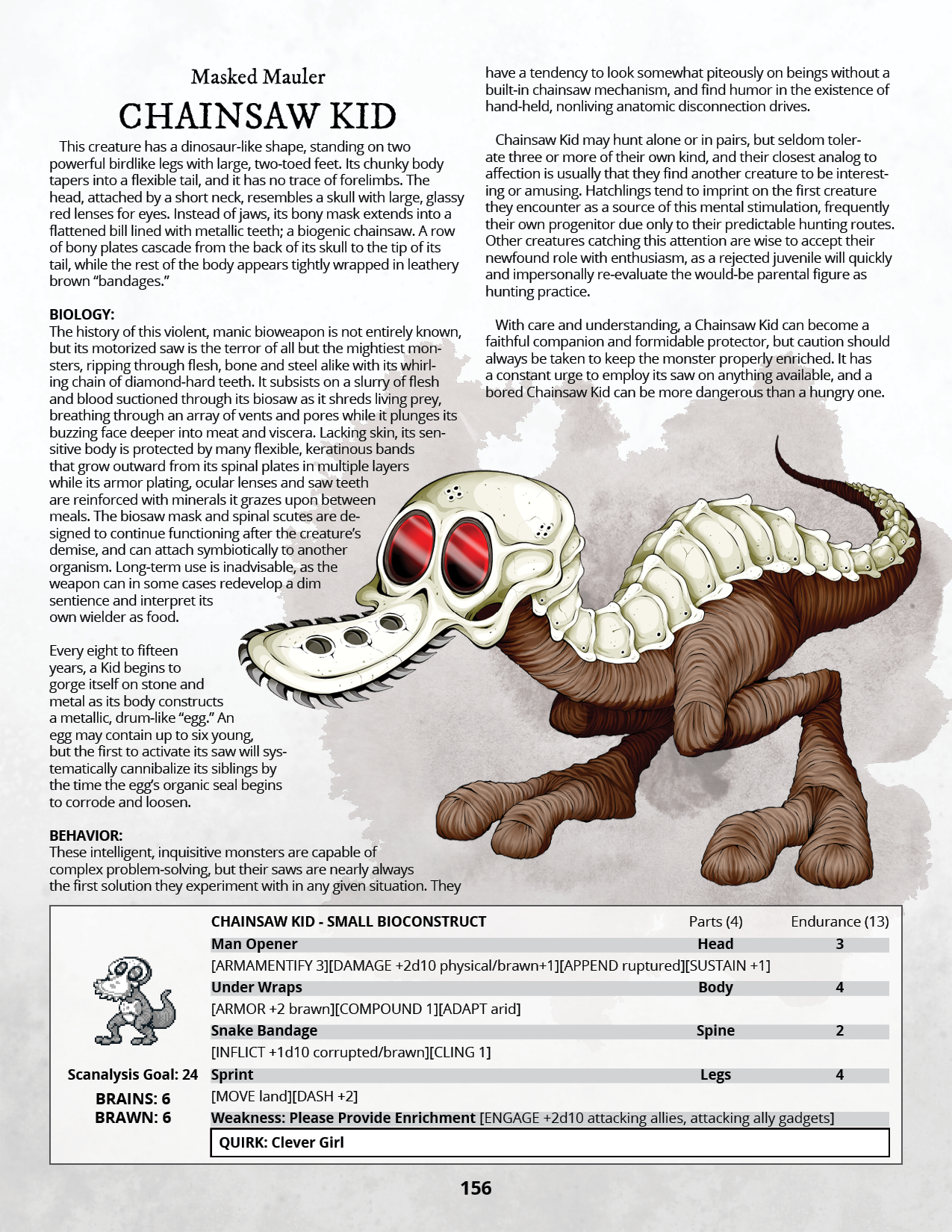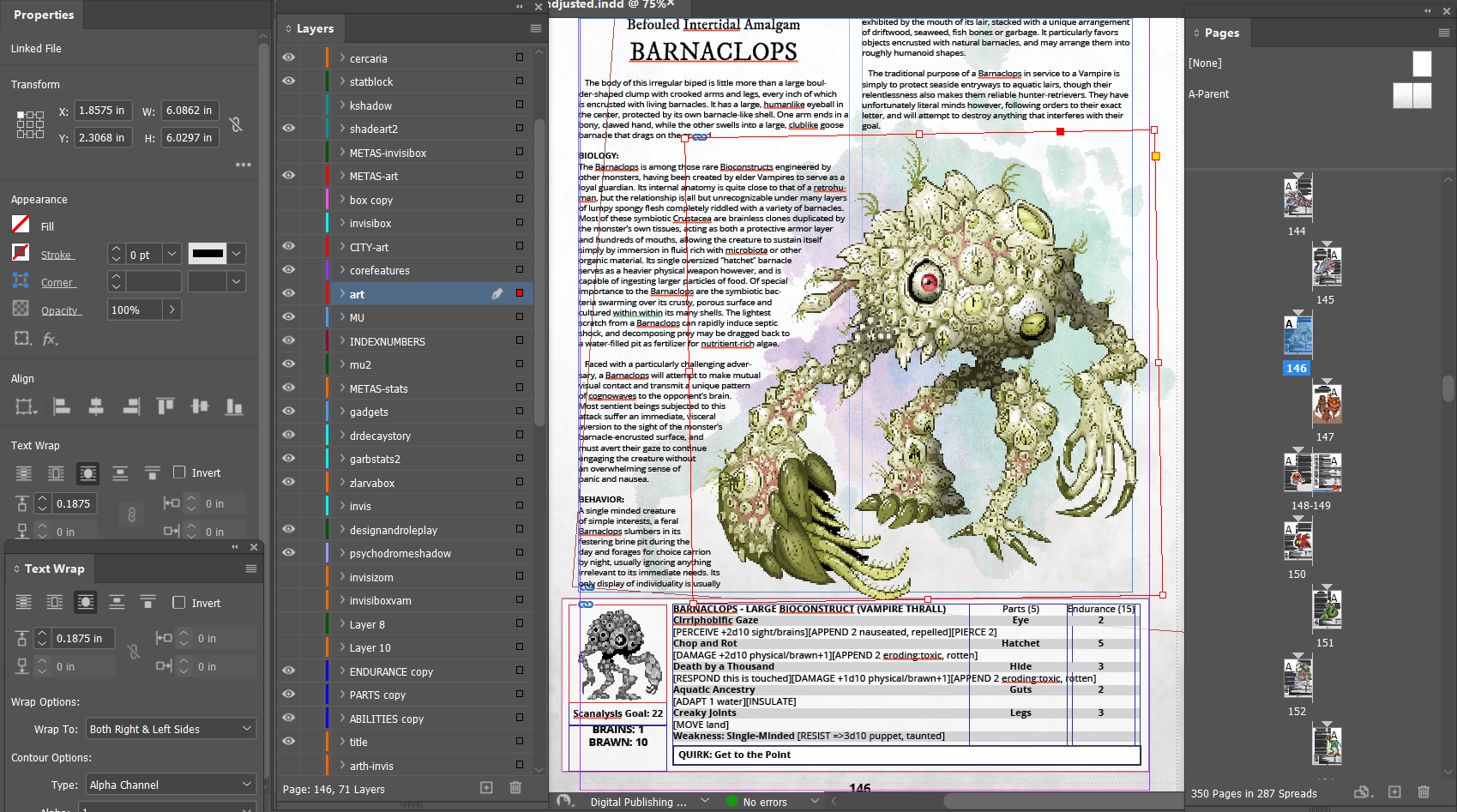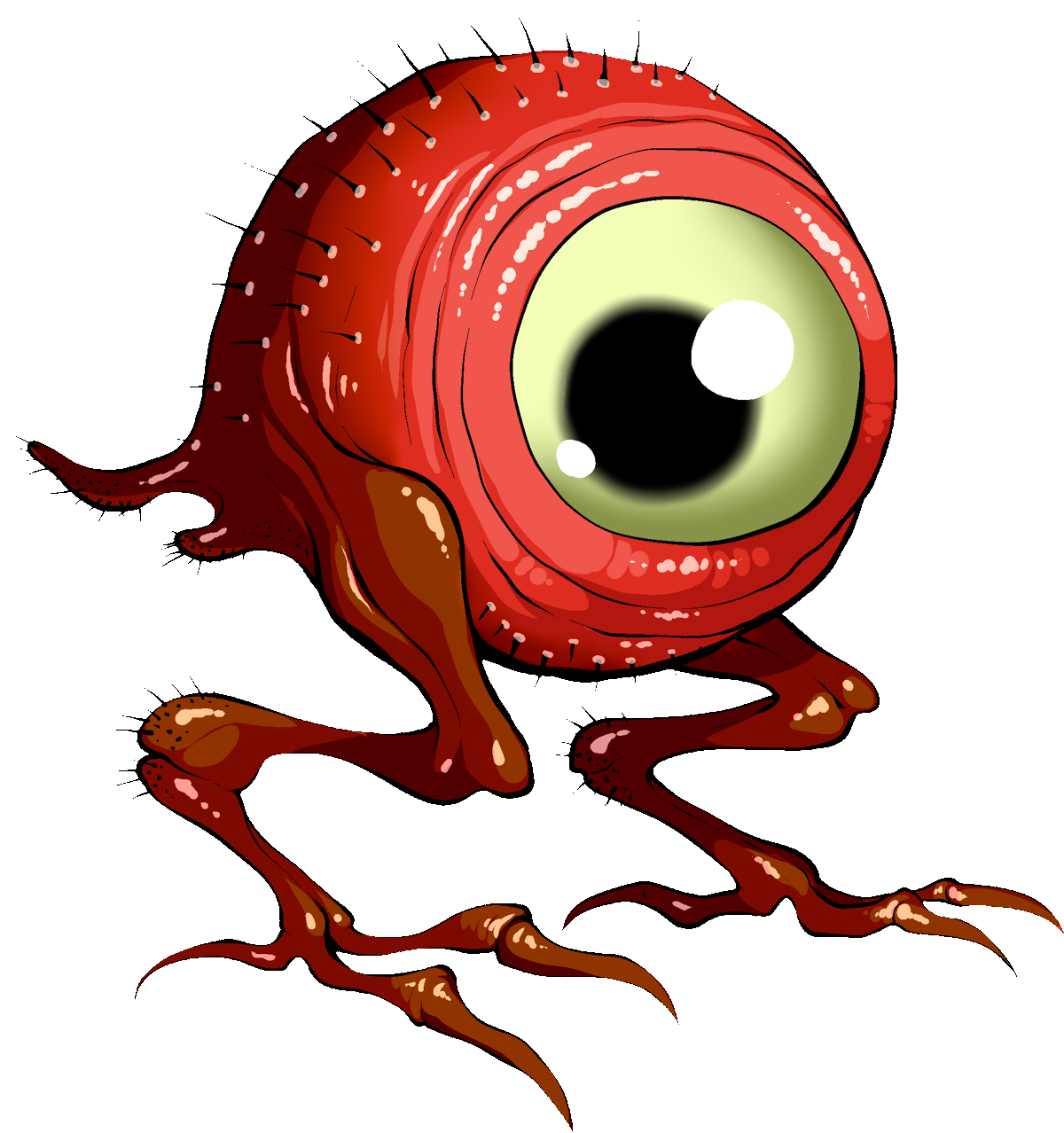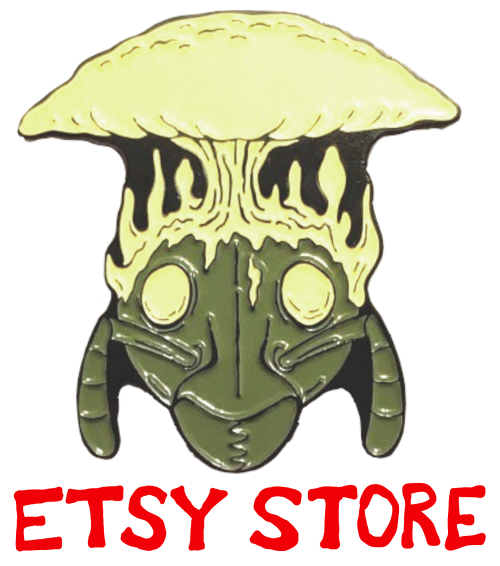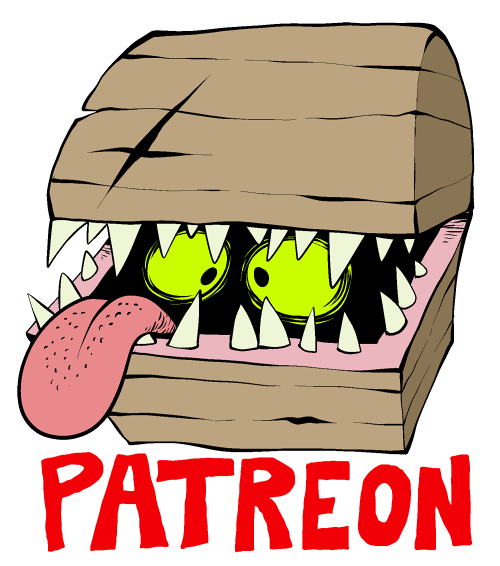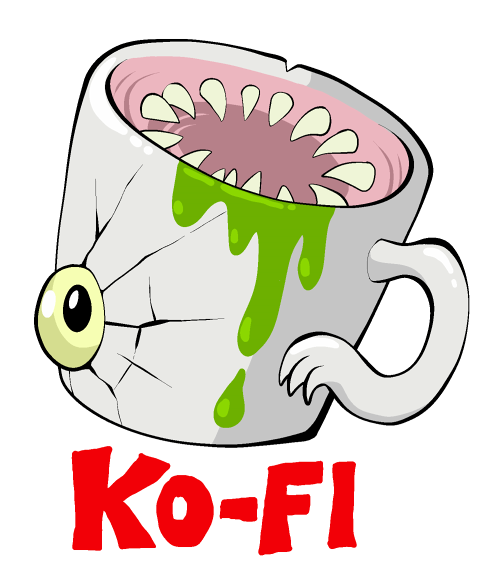PART ONE: What IS Mortasheen?
(As a Project)
Written by Jonathan Wojcik
Sometime between 2001 and 2003, when I had barely the confidence to draw more than thumbnail-sized pencil scribbles, I felt the urge to come up with a variety of grisly-yet-goofy little "mascot"-quality monsters, first for a platform game concept I called Crepuscular, and later as something sort of aimless I slapped with the name Necromon. With a dime for scale, the very best of my artistic abilities at the time looked like this:Not long after I started calling them "Necromon," I was well into plotting out an entire continuity I knew for certain would take after the monster-training genre as defined by Monster Rancher, Pokemon and Digimon. A genre still considered so fresh and trendy at the time, a lot of people were just calling these games Pokeclones. Not that this was really "Necromon's" only inspiration; I was also pretty deep into neopets at the time, but it had already deeply disappointed me, twice. First when it teased a selection of weirder, glorpier virtual pets I immediately fell in love with, only to reveal that these were "mutated" neopets for a storyline in which the horror of these "mutations" was heroically averted. The site, at the time, had no intention of ever making these creatures available to players at all, but I mean, look at them:
...I was especially enamored with that last hairy globule, reminiscent (to me) of what you might get if Seth Brundle fused with a tardigrade instead of a housefly. And while Neopets did eventually begin releasing Mutant Neopets to the eager public, they evidently decided that my favorite precious baby was still too ugly and unappealing to be allowed to live, and replaced it in 2001 with what looks more like a mascot for a weed dispensary:
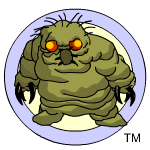
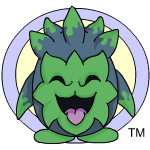
what.
So, around this time, I might have also got it in my head to start designing my own html-flash-powered Virtual Pets Web Experience, "with blackjack, and hookers!" as Bender Bending Rodriguez first uttered just one year prior, in that brand new Futurama cartoon show everyone was talking about. And yeah, because that was still a fresh meme, I was going to give my hypothetical neopets knockoff both an in-universe casino and what would ambiguously be a brothel, because this was going to be a darker and edgier neopets knockoff, for sophisticated, adult coinnosseurs of cartoon creature gifs. Cool Guys like me who were into the also-still-brand-new Invader Zim and the entire Adult Swim block.
...I absolutely, positively never got around to beginning any such project of the sort, or ever even learned how I would have done so, but my ideas for this Mall Goth Pokemon-Neopets bastardization did have the beginnings of a fleshed out world and logic that soon evolved into the setting of "Necromon;" a world fueled by arcane science, cosmic horror and blasphemous sorcery, where Pokemon-style battles could play out with every edgy, spookier twist a kid from the 80's and 90's thought was going to be awesome.
I began pouring all my favorite themes, aesthetics and subject matter into this proposal. Childhood favorites like the Mad Scientist toy line, the look and feel of Ugly Stickers, the works of Hideshi Hino that I'd only just discovered, everything to do with Halloween, with B-movie monsters, with Survival Horror gaming and, of course, enormous amounts of biological science knowledge, having originally wanted to devote my life to the professional study of invertebrates and still, at the time, believing I was headed right down that path.
The setting expanded with more or less lightning speed, and so did my ability to illustrate it. Soon, I was drawing monsters at least the size of quarters, with Silver Dollar proportions on the horizon. Dozens of ideas for new creatures came to me each and every day, and the more of these drawings I made, the more confident I felt in both the drawings themselves and the ideas they represented, to where I was repeatedly redoing entire sets of these monsters at a time, sometimes only months after my initial drawings. Here's just one facelift that befell the second-ever "Necromon" batch:
...And here are those same six monsters as of today, if you were wondering:
By 2007, I believe roughly four years after the first use of "Necromon," I'd long since upgraded the setting's name to Mortasheen, an extremely old term for a deadly illness that strikes horses and heavily features in stories of the Nuckelavee. I don't know...the sound of the word just felt right, I guess! This was also the year I finally felt brave enough to upload my monster drawings one at a time, as they had now grown to fill entire larger size index cards, individually even.
This was also when I would begin building an archive of Mortasheen monsters here on bogleech.com. Not long after that, I even progressed up to the point that I was drawing on normal, full-sized sheets of paper, and later still, enhancing every drawing with a generous addition of digital shading and highlighting:
It was a bit before that leap on August 31st, 2009 when someone suddenly appeared in my email inbox, asking if I ever considered the Mortasheen world for a pen-and-paper Roleplaying Game. This was someone who had a few years of experience designing their own homebrew gaming material, and from that single conversation, an entire new project was born overnight; one that began as something fairly small, mostly just for fun, between just these two people, and we made a lot of progress together. Enough that, another year later, this new friend wanted to know how seriously I might consider the whole thing as an actual business venture, because they happened to have another set of friends starting up their own independent tabletop gaming studio, and they were evidently WOWED by the little setting I'd built.
By 2010, I'd entered an actual, officially notarized legal contract with Cat-Powered Raygun Studios, consisting of a small team who put their experience and creativity together to take the project exponentially further, redeveloping an entire new gameplay system from scratch and brainstorming a positively tremendous volume of new ideas for the world itself.
...Which, for the most part, I was kind of only tenuously involved with. Everybody meant well, and I was still officially the head artist of what was still considered my original setting. However, just enough happened without me that an entire TVtropes page would fill with setting details I didn't really recognize, and I'd only be contacted every few weeks with an update or two, then every few months, then roughly once or twice a year. As early as 2011, I thought the project was far enough along that I announced it imminent arrival with cover art that has by now ceased to accurately reflect the canon designs of over half of the monsters that appear on it:
Several more years flew by, during which I saw just enough progress to know that, yes, work was being done, on a game that had perhaps grown too large for the efforts of only a few people who were all (including myself) working on the project of their own unpaid volition. At some point, the original individual who contacted me got busy enough with a more critical, actually-paid career that they quietly phased out of the project and even out of social media use at all, so as I write this, I'm honestly not sure whatever became of them since then. As I understand it, others involved had their own major life developments, one by one, until no one was really left to run the development side but the original founder of CPR Studios, Morgan Mullins, who somehow continued to stick with it through his own significant real-life obligations and struggles. There were at least two, maybe three "this year for sure" false alarms by the time it was approaching a whole decade, and no one could really be faulted for it, but by the fall of 2020, I had learned enough about making books to charge ahead with what became a startlingly successful Kickstarter project.
...And at the time (I guess these are today's magic words) of that project, I was sure nothing was left but for Morgan to send me the gameplay data I could plug into a PDF, which I foolishly believed would take me only roughly a year of work. Instead, it took roughly a year and a half to receive all the necessary files that had been written over the course of that complicated decade, which proved to be novels worth of material, from multiple people, that had drifted quite a bit in tone and style from what Mortasheen's audience had grown to expect, but still packed with solid concepts representing a great deal of passionate human labor. This needed to be combed through word by word and incorporated together with my own material until the sum total content not only made elegant sense as a whole, but could fit into only a fraction as many pages. Some things would have to be merged together, some expanded upon, some pared down or temporarily put in reserve, others reinvented with a copious addition of brand new elements to fill in countless gaps in the many-layered merger of ideas, all before I was even sent the final pieces of the gameplay system, too.
All this would require, in the end, hundreds of hours of editing, formatting, further development and many brand new illustrations, which quickly turned my "roughly a year" endeavor into two, then three.
Morgan Mullins spent, I believe, around a year or so of his own assembling the gameplay information into a series of documents I could incorporate into the book. And while it looked nothing like the system we started with in the 2000's, it was in my opinion completely worth the wait. It isn't just completely original and distinct from anything out of Wizards or Paizo, but precisely the only way the Mortasheen setting could ever really be communicated in tabletop gaming mechanics, with a modular system allows you to not just build creatures from multiple abilities, but build each individual ability from a large enough library of modifiers and add-ons that you can more or less recreate the effect of almost anything you want, computer-code style, except it's simple and intuitive enough that even I can figure it out. The system has been a huge hit with every backer (as far as I'm aware) who's gotten to see it, learn it or test it, but that of course brings us to the next big issue, which was unfortunately that I did not have time to be one of them.
In all the years since August 31st, 2009, in fact, I never had a single minute of experience playing any tabletop roleplaying game myself, and at the time of this writing I still rely entirely on others to test the game and offer feedback. More pressingly, while the system had everything necessary to build playable monsters, hardly any specific monsters had been built with it yet, which was supposed to constitute at least half of our 200-400 page book.
Fortunately, a long time fan of the setting had already leapt on learning the system, homebrewing her own content and piecing together the specs for over 200 existing Mortasheen monsters by the time I even asked if she might want a job. A massive, massive amount of work still had to be done for the book to happen, and the only reason it is happening at all now is that my friend and now coworker Bonnie has currently spent more than two straight years of her life not only writing hundreds of playable builds, but essentially running a playtest focus group to expand on and refine the mechanics, assist me in editing and formatting, develop entirely new content to fill in essential niches, design brand new rules where testing deemed it important enough and help ensure that this first book will actually be worth what has finally totaled five years since the Kickstarter alone. All for prooobably a whole lot less pay than the industry standard, too, because I'm only one person who makes just slightly enough to afford basic living (kind of), it was still going to take the entire original projected $10,000 budget just to print all the physical backer copies that were already ordered, and the extra backer money I received after taxes, fees and Kickstarter's cut was by then already spent on a dozen additional artists to keep the workload from running even. longer.
There's a whole, whole lot more I could get into, but that's where we are now: after five years and hundreds of painful hours of drawing, writing, editing, formatting, proofreading, rewriting, proofreading, re-editing, proofreading, reformatting, grappling hundreds of technical hiccups in more than one editing software I had to teach myself from scratch, having to reformat the entire book over again in a different way for different printing methods and a mountain of other miscellaneous technical hurdles, Mortasheen: The Tabletop Role-playing Game has the presentable sourcebook you should soon be able to order, for real, and will hopefully start to see on (at least virtual?) store shelves over the years to come as we continue to promote and expand on the game as a whole.
Next, a rundown of the Mortasheen setting itself, before we kick off a 31-day countdown to the book's first drop.

